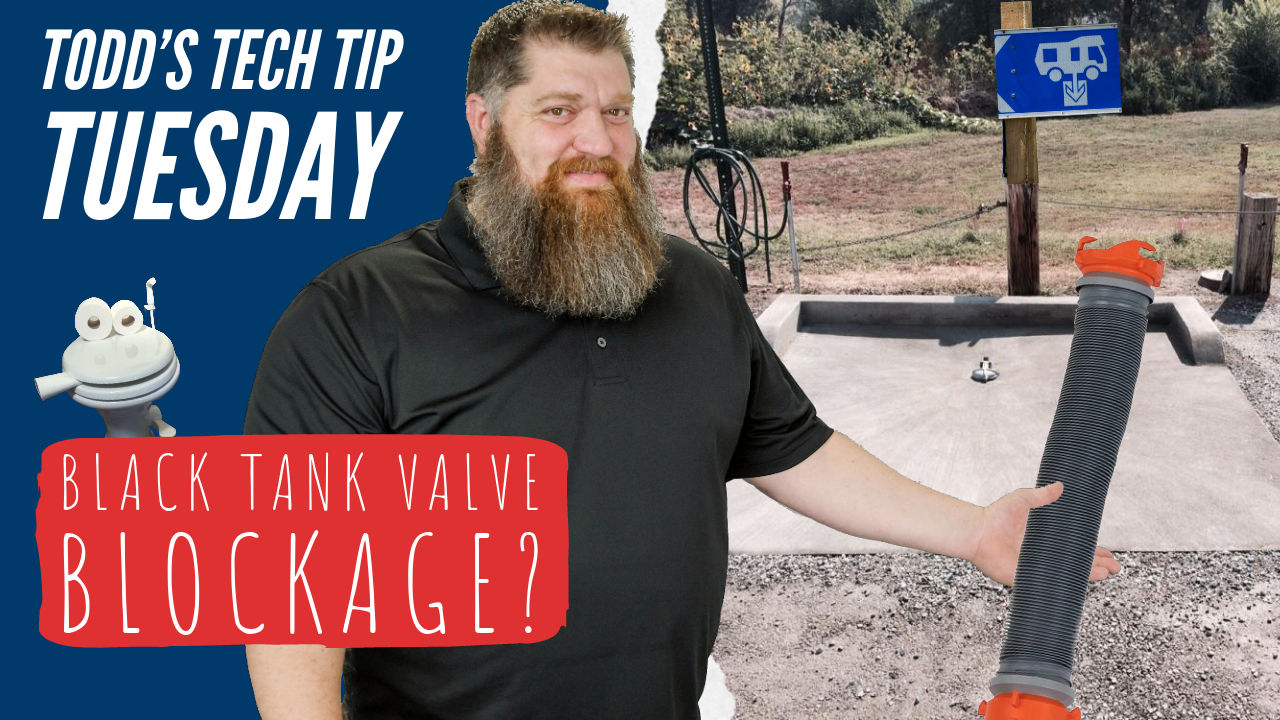Get your RV Technician Certification in as little as 5 weeks!

Owning an RV can be a thrilling adventure, but it also comes with its own set of maintenance challenges. One such issue that RV owners might encounter is a problem with the gate valve, especially concerning the black tank. Let’s explore how to identify and solve issues related to the gate valve, ensuring a smooth and trouble-free RV experience.
The Gate Valve Problem
Imagine this scenario: you’re trying to empty your RV’s black tank, but all you get is a mere trickle instead of a steady flow. This situation suggests that the gate valve, also known as the fullway termination valve, isn’t opening fully. A technician might confirm that there’s no solid blockage in the system, which leads to the conclusion that the issue lies with the gate valve itself.
Diagnosing the Issue
If backflushing the system doesn’t reveal any obstructions, it’s likely that the gate valve isn’t opening as it should. This could be due to several reasons:
- Cable Pull System Issues: In RVs with a cable pull system for the gate valve, the cable might have either broken off or become stuck. A possible solution is to lubricate the cable with a dry silicone or PTFE spray, working it back and forth to ease the movement.
- Stretching of the Cable: Over time, the cable could stretch, leading to resistance when trying to open the gate valve. This stretching means the valve isn’t opening completely.
- Using a Boroscope: To confirm whether the gate valve is opening fully, you might need to use a boroscope. This device allows you to visually inspect the interior workings of the valve.
Addressing Vent Stack Blockages
Another aspect to consider is the vent stack of the black tank. If solids are coming out but only as a slow, thick flow, the vent stack might be partially blocked. To clear this, run a water hose down the vent stack and see if it clears any obstruction.
Solving the Gate Valve Issue
If the problem is indeed with the gate valve, the solutions can vary:
- Lubricating the Cable: As a first attempt, try lubricating the cable to see if this improves its function.
- Replacing the Gate Valve: If lubrication doesn’t work, the gate valve might need replacement. This is a relatively inexpensive part (around $20-$30) but requires time and effort to replace, especially considering the messy job of dealing with the contents of the black tank.
Conclusion
Dealing with a malfunctioning gate valve in your RV can be a daunting task, but understanding the potential causes and solutions can make it more manageable. Regular maintenance and prompt attention to issues like these can ensure your RV remains a reliable and enjoyable home on the road.
Need Help? You can find an RVTAA certified mobile RV Technician at RVTAA.org
Get Registered Today!
Talk to a student advisor to learn more!